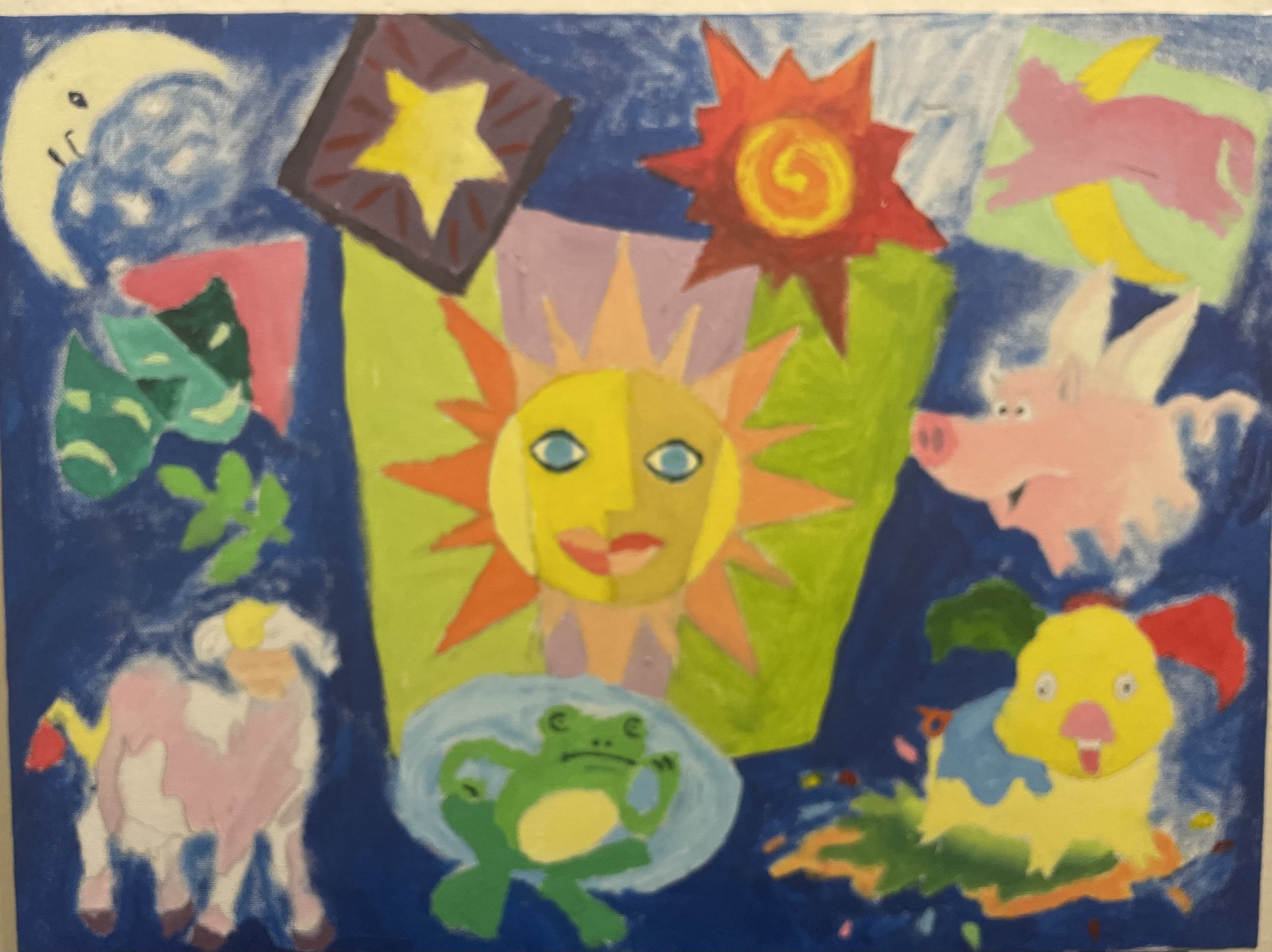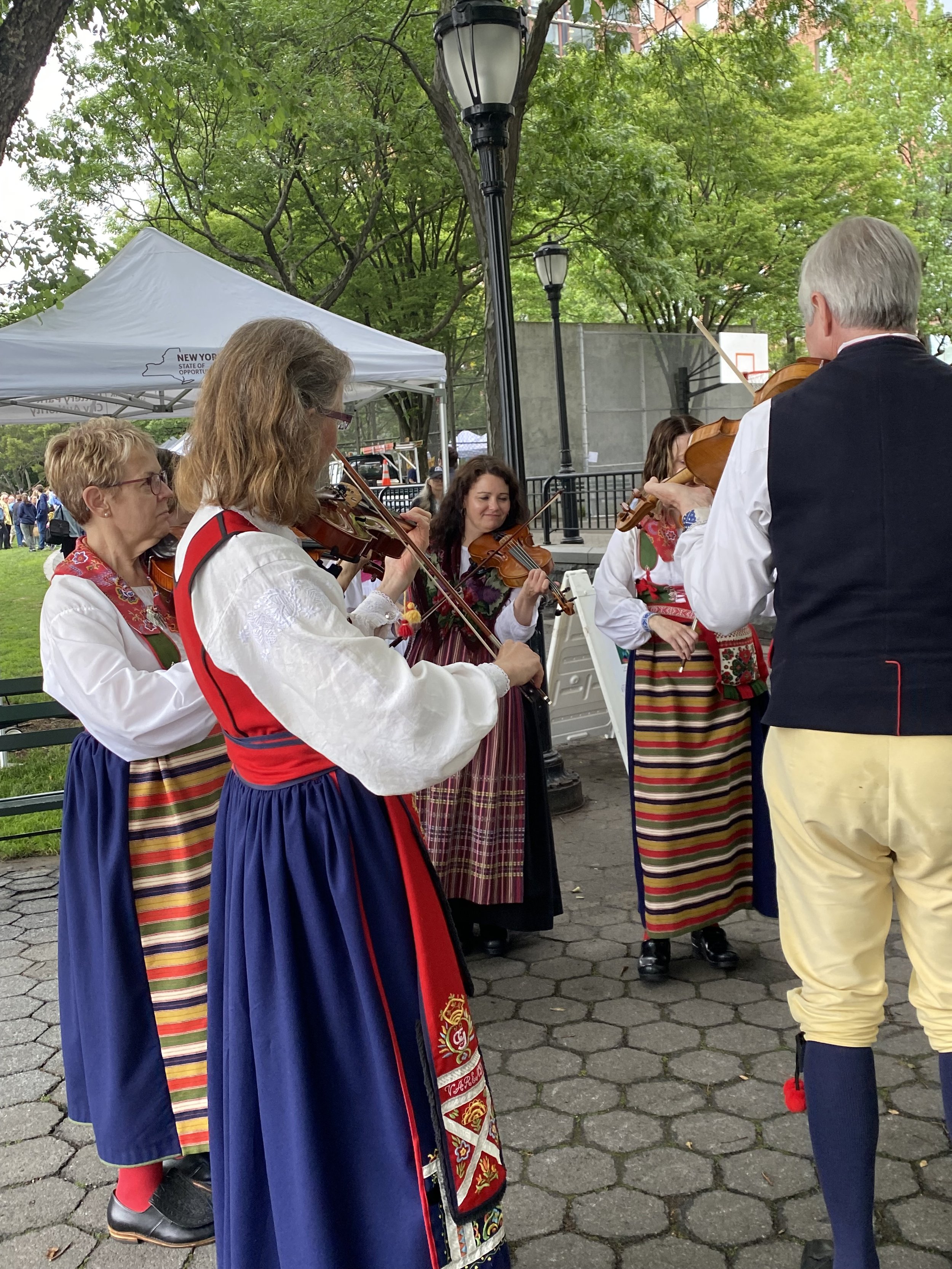Summer Solstice
Painting by David Andersson when he was about 12 years of age. It is unfinished. It can be noted that the universe itself is also still unfinished.
The Summer Solstice has long intrigued me. It seems to me that the exact moment of switch is a profoundly sacred moment: when the Earth’s tilt is at a position in its orbit around the sun, after which the length of daylight hours begins to become shorter and the nights longer in the Northern Hemisphere. The moment is one of transformation, just as it is in the moment of the Winter Solstice when the reverse occurs. This year the Summer Solstice occurs on Thursday, June 20, 2024 at 4:51 p.m. Eastern Daylight Time, which is the beginning of summer.
Here are some Summer Solstice-related activities from a few countries:
Some old European cultural customs still mark the Summer Solstice moment. For example, in Sweden, the commemoration of the longest day and shortest night of the year, known there as Midsummer, is celebrated with gatherings of families and friends in fields and parks. Participants erect a flower-bedecked Maypole, around which children and adults, often in Swedish folk costumes, dance to traditional Swedish folk songs. It is an event of community and one in which my own children, my husband Bruno, and I participated while we were in Sweden visiting his sister and some of our nieces and nephews. Women and girls decorate their hair with wreaths of fresh flowers, traditional food is shared, and the dancing around the Maypole while holding hands is a fun-filled event for all ages. In New York City celebrations of Swedish Midsummer occur every June in lower Manhattan in Battery Park City with New York Harbor and the Statue of Liberty in view. There are celebrations all across the United States.
Midsummer in Sweden 2019. The raising of the Maypole. Photo found in Sweden’s Wikipedia (Wikimedia). Submitted by Olle Andersson.
Swedish Midsummer in New York City, June 23, 2023. Photograph by Irmelin Koehler.
Swedish Midsummer in New York City, June 23, 2023. Photograph by Irmelin Koehler.
In Finland, similar celebrations occur on the Saturday between the 20th and 26th of June. It is also a celebration of Saint John, and as such, the Finnish name for the event is “Juhanus”.
In Wiltshire, England, Stonehenge is thought to be significant at the time of the Summer Solstice. People of today gather to watch the sunrise. They can see the rays, becoming visible in patterns following the apparent movement of the sun, through openings created by the placement of the stones in the ancient circular monument. At the very least, Stonehenge is an engineering marvel that carries special meaning to pilgrims who travel there, regardless of their religious leanings.
Christians in many countries have supplanted Old World customs around the Summer Solstice with a commemoration of the Nativity of St. John the Baptist (mentioned above) on and around June 24th each year. There are several explanations for the placement of the birth of John around the time of the Summer Solstice. As a resident in the Northern Hemisphere, I relate best to the one that refers to the verses in the Gospel of John where the Baptizer says: “He must increase, but I must decrease” (Jn. 3:30 ), referring to his cousin Jesus who called himself the Light of the World (Jn. 8:12 and Jn. 9:5). In the Northern Hemisphere, following the Summer Solstice, the amount of daylight begins to decrease. Significantly, the birth of Jesus is placed around the time of the Winter Solstice in December, after which the amount of daylight begins to increase.
The Divine is evidenced in all of Nature. When our Earth moves in relation to our Sun—when time stands still at the cusp of summer in the North—humanity experiences one very special moment. And so it has from ancient times to the present.
It seems appropriate, at this point, to include a segment of the prayer of a beloved Catholic saint who is familiar to many people around the world: Govanni (his name was changed later by his father to Francesco) di Pietro di Bernardone, better known as St. Francis of Assisi. He was an Italian mystic, poet, environmentalist, lover of all created nature, and Catholic friar who founded the Franciscan religious order. He composed “The Canticle of the Sun,” a song of praise and glory, in 1224 or1225 toward the end of his life, a time when he was almost totally blind. St. Francis died on the evening of Saturday, October 3,1226 in Assisi, Italy. His feast day is October 4.
St. Francis of Assisi with Birds
THE CANTICLE OF THE SUN
Praised be You my Lord with all your creatures;
especially Sir Brother Sun, who is the day
through whom You gave us light.
And he is beautiful and radiant with great splendor!
Of you Most High, he bears the likeness.
-St. Francis of Assisi(1225)





